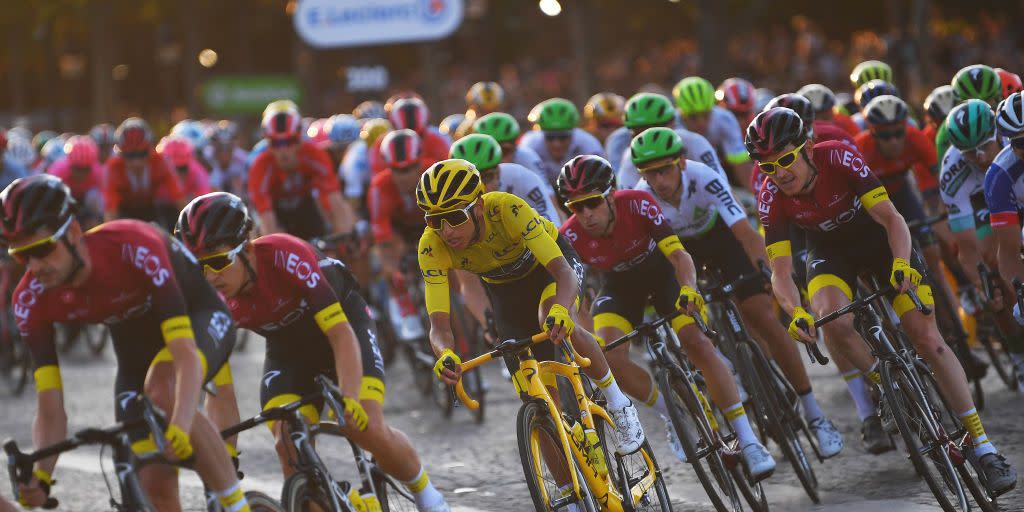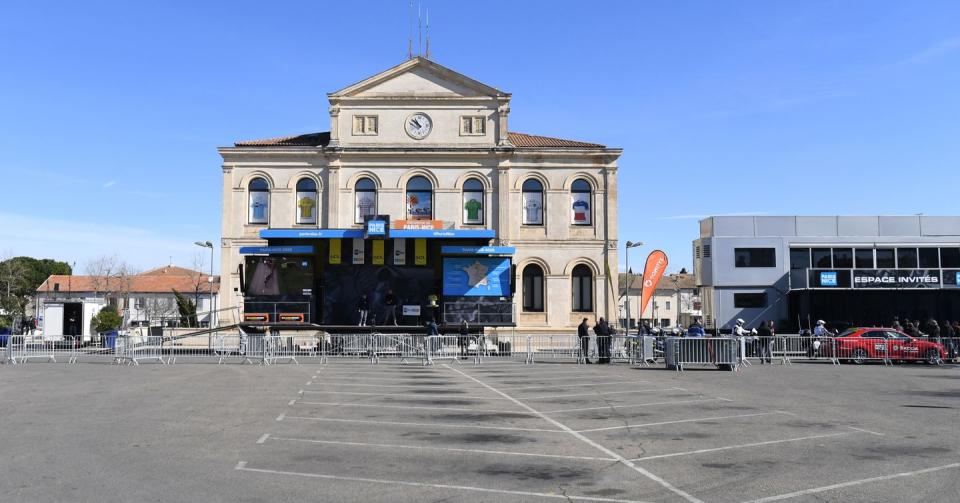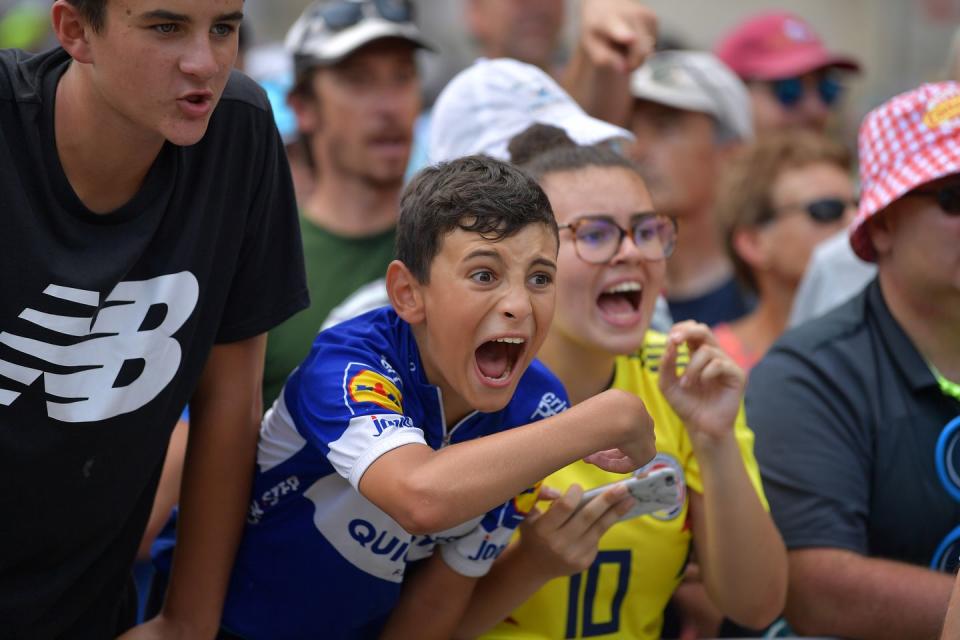Coronavirus Will Deal a Serious Blow to Pro Cycling

By the second week of March, it was apparent that sports couldn’t continue as normal—couldn’t continue at all—during the global coronavirus pandemic. But for pro cycling, the warning signs came earlier. As Italy struggled with mounting cases, race organizers made the decision to call off the highly anticipated Strade Bianche. Meanwhile, Paris-Nice implausibly continued with a thinned peloton and an ever-increasing set of restrictions until the promoter, ASO, called a halt one stage shy of the planned finish.
The dominoes fell quickly after that, with country after country announcing major restrictions on movement and cancellations of races. The Classics, Giro d’Italia, and Tokyo Olympics were rescheduled or called off, even as the ASO continued to search for ways to hold the Tour de France. The result is unprecedented in living memory: Unless the world makes a dramatic recovery by summer, we may be looking at the first year with almost no major races since 1918, during World War I. Since then, neither pandemic nor global military conflict has stopped all professional bicycle racing; the Tour of Flanders ran in occupied territory every year during World War II.
In the larger context of widespread sickness and economic shutdown, the impact of the coronavirus pandemic on pro cycling is small. Nonetheless, it will ripple out over many seasons in countless unknowable ways. How will a one-year postponement of the Olympics affect the chances of late-career riders like Alejandro Valverde, age 40, and Annemiek van Vleuten, age 37? What of the career trajectory of young phenoms like Egan Bernal, Kate Courtney, and Mathieu van der Poel? Maybe the best example of the virus’s butterfly effect, however, is the Tour. If it can’t run, which seems entirely possible, consider the impact on Bernal’s team, Ineos.

Find 52 weeks of tips and motivation, with space to fill in your mileage and favorite routes, with the Bicycling Training Journal.
For years the richest outfit in pro cycling, Ineos’s $45 million a year budget—more than double the WorldTour average—may now look more like a liability than an asset. Owner/sponsor Ineos is a petrochemicals behemoth, with over $17 billion in annual revenue. But it faces dual impacts of a crashed economy and an oil-price war. But if Ineos’s business collapses, its controlling owner, Jim Ratcliffe, may reconsider his spending priorities; the first step might be major cuts to the team roster.
Ineos isn’t alone. Astana, Bahrain McLaren, and UAE Team Emirates rely heavily on oil and gas revenue for funding. The broader economic downturn also poses threats. A number of team title sponsorships are due to expire at the end of the season, which may be before the economy recovers. And more than a third of WorldTour teams feature title sponsors in tourism, construction, and leisure interests, businesses that will be hit especially hard.
Deceuninck-Quick-Step’s general manager, Patrick Lefevere, is a wily operator who’s saved his team from demise several times already. But he’s concerned. “It would be naïve to think that the economic impact of the coronavirus crisis does not translate to cycling,” he wrote in a March column in the Belgian daily Het Nieuwsblad. The effects are already being felt: Lotto Soudal furloughed most support staff in late March, while managers and riders took pay cuts. Bahrain McLaren and Astana also instituted major pay cuts for riders. Meanwhile, the pro teams alliance (AIGCP) petitioned the UCI for permission to re-negotiate rider contracts and access the UCI’s own $1 million emergency fund.
Coronavirus: #lottosoudal riders voluntarily reduce pay: https://t.co/vkrGiH4vdU
— Lotto Soudal (@Lotto_Soudal) March 28, 2020
The linchpin is the Tour, from which most teams achieve the bulk of their vital media exposure. If the Tour is canceled, wrote Lefevere, it’s “a total disaster.” As part of the media conglomerate Groupe Amaury, tour promoter ASO has more resources and could probably withstand the hit. The Tour is also a national treasure: The French government will do whatever it takes to save it, as with Notre Dame after the 2019 fire. (A decision is likely in May.)
That’s not the case for many other races. Outside of events run by big promoters ASO, RCS Sport, and Flanders Classics, the calendar could change dramatically. Most other races lack lucrative TV contracts. Instead, events get most of their revenue from sponsorships and host towns, which pay for the race to visit in the hopes of generating tourism. Municipal budgets will be strapped, and six-figure grants to bike races could be out of the question.

In a worst-case scenario, the WorldTour teams lineup could shrink by a third (assuming that 12 of 19 teams have clear sponsorship jeopardy, and that around half of those could fold) with massive roster revamps and many mid-tier riders pushed out altogether. The racing calendar could collapse too, and fewer events cause a negative spiral of less coverage and exposure for teams, which then have a harder case to make to potential sponsors.
Although women’s pro road racing is at the mercy of the same forces as men’s racing, it is perhaps better positioned to withstand a major downturn, if only because it’s never had much money to begin with and team budgets are miniscule compared with men’s. Races run on similarly reduced costs. That long-term, forced resiliency could lead to a quicker rebound.
We will not know for months yet if the worst will come to pass. And whatever happens, there is also a new opportunity for positive change. Among the options the ASO is exploring is a Tour without roadside fans, which would push the sport to create new ways to engage the public and present the race. It also may reshape the calendar in constructive ways. Some proponents of modernizing the sport have suggested shortening the Grand Tours, both for riders’ health and to open up the calendar. Promoters have resisted that, but if the 2020 Tour becomes a 10- to 14-stage race—and is a success—we could see permanent changes.
Finally, the sport’s financial model has never been stable or equitable, with power concentrated among big promoters, and far less influence for teams and riders. The crisis may shift that in unpredictable ways.
As it has with larger social concerns like healthcare, employment, and social welfare, the coronavirus has exposed structural weaknesses in pro cycling that have always been there, and that the sport’s power brokers have so far refused to fix. This is the opportunity to modernize the sport financially and organizationally—and to give everyone, especially the riders, involved a bigger voice in deciding its future.
When we have flattened the curve and created a vaccine; when our hospitals are no longer flooded with the sick and dying; when we have returned to work and school and confront the monumental task of rebuilding, we will face a question that will be central to every facet of our lives, including sports: What now? What are our values and priorities as a society? Who has a say in deciding them? And how, after everything, can we build something new, something better?
WATCH NEXT
You Might Also Like

